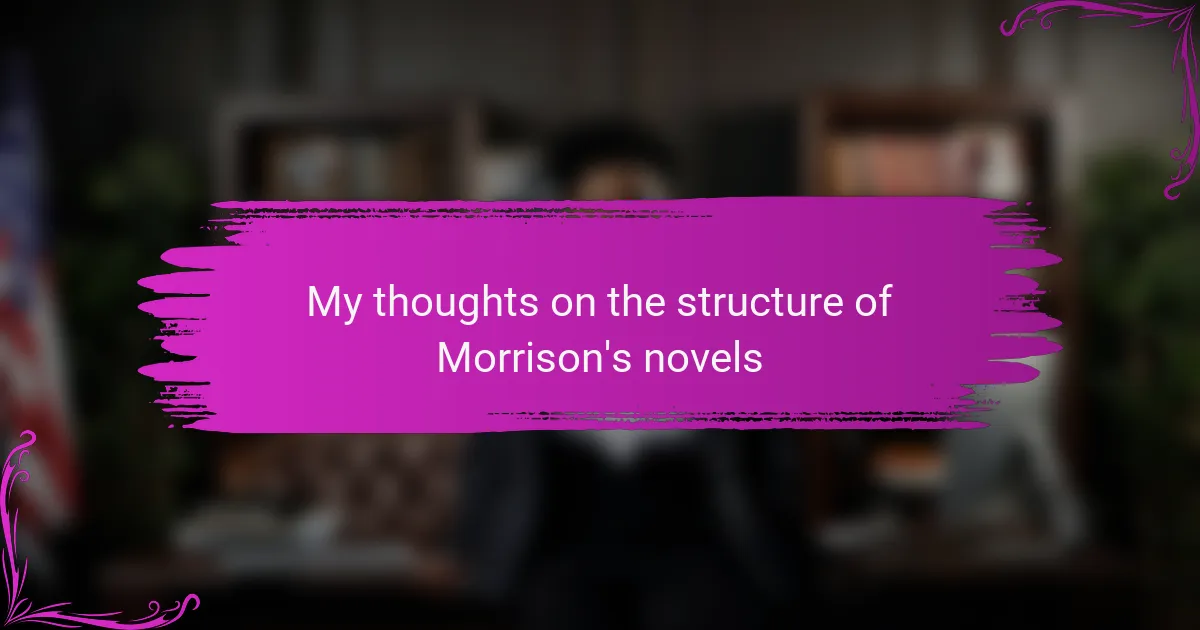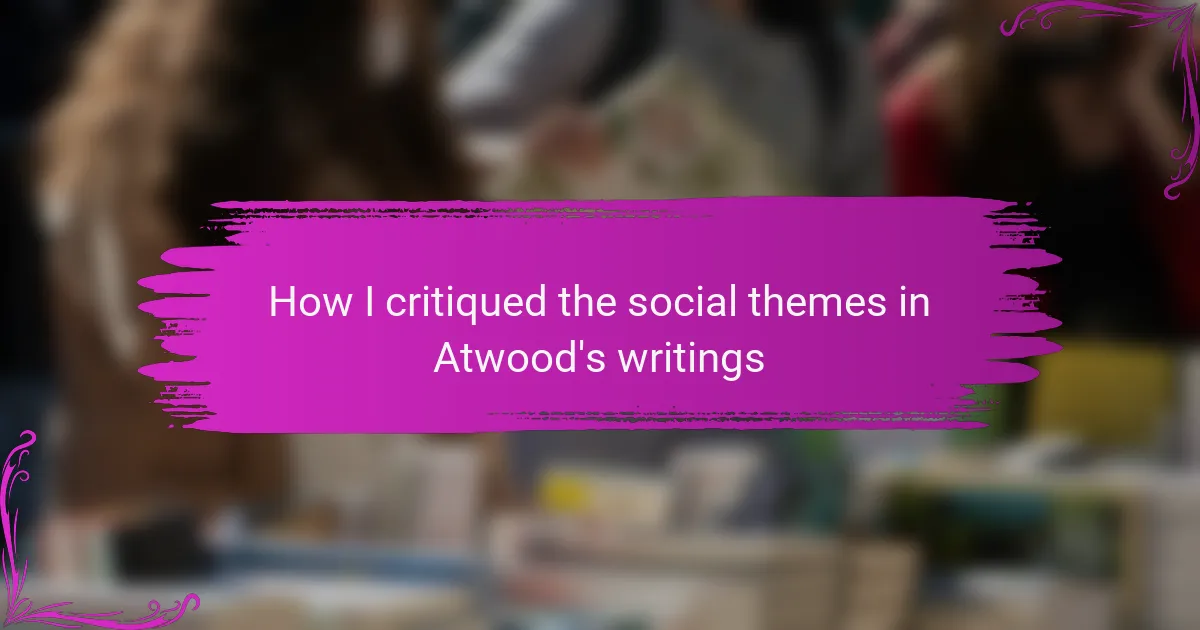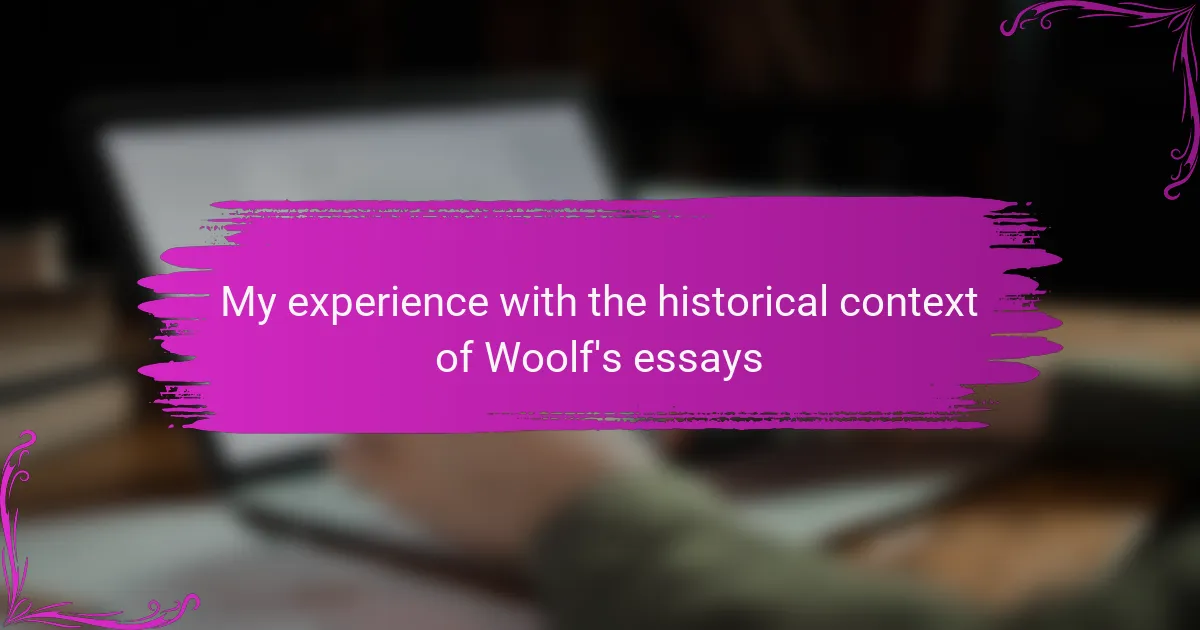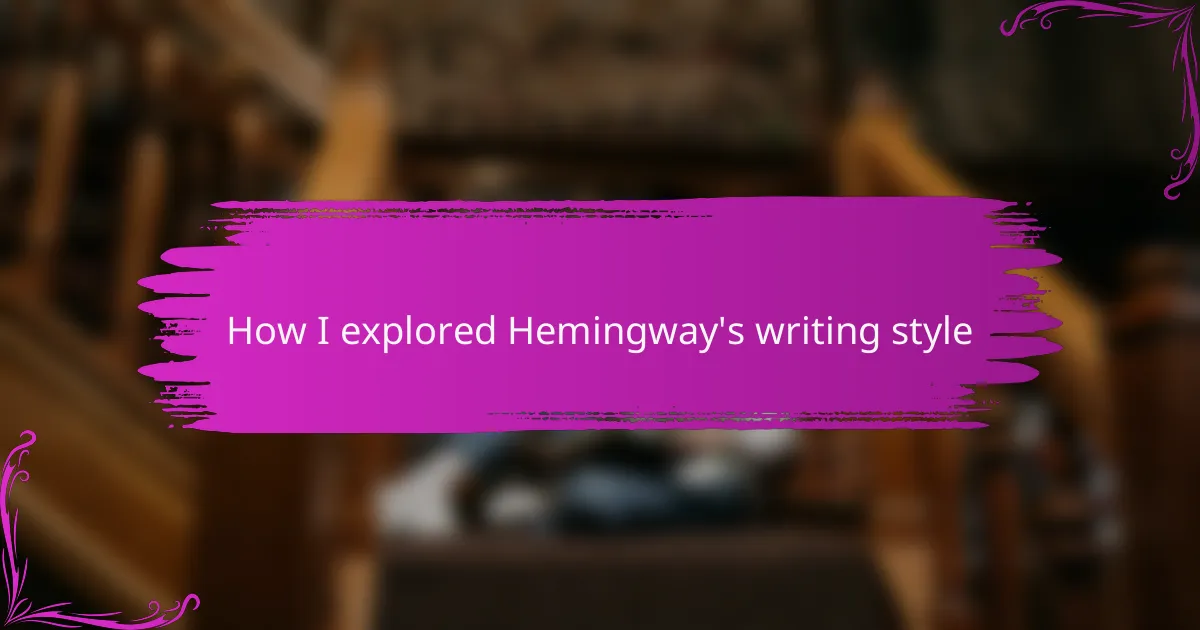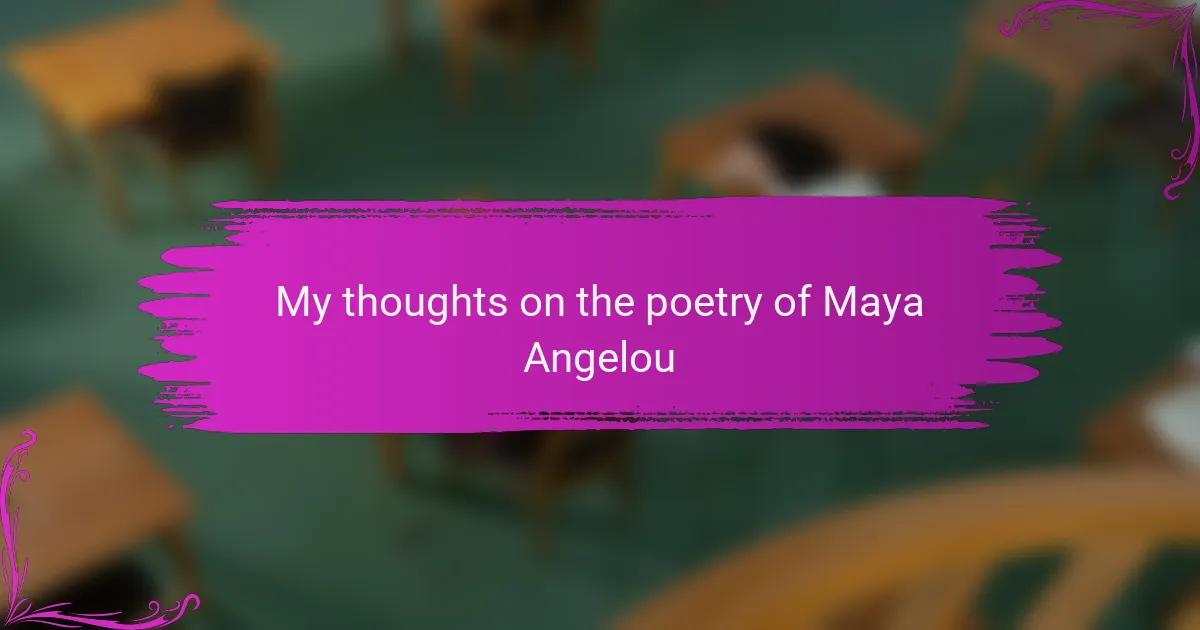Key takeaways
- Toni Morrison’s novels intricately weave personal and collective histories, inviting readers to reflect on identity, memory, and community.
- The non-linear narrative structure in Morrison’s works enhances emotional engagement and mirrors the fragmented experiences of her characters.
- Morrison’s use of rich, lyrical language and symbolism creates a profound emotional resonance, prompting readers to introspect on their own lives.
- Engaging with educational resources and activities centered on her literature fosters deeper understanding and connection to themes of resilience and belonging.
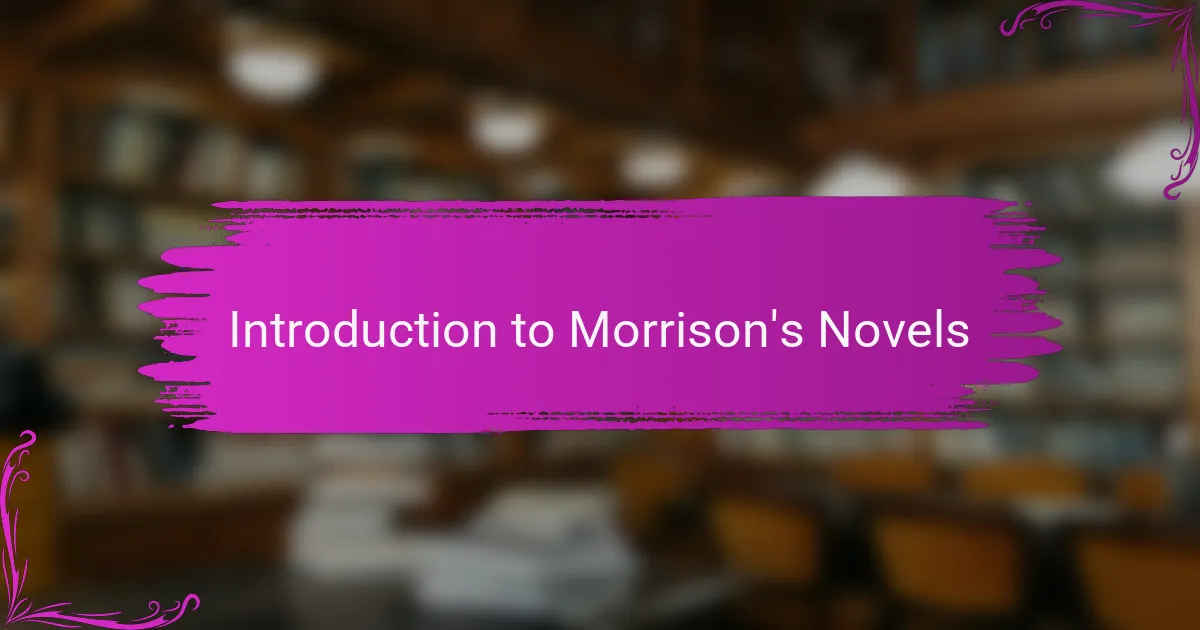
Introduction to Morrison’s Novels
Toni Morrison’s novels resonate deeply with me, inviting readers into the complex tapestry of African American life. Her ability to weave personal and collective histories into her narratives has always struck a chord; I often find myself reflecting on how each character embodies the struggles and triumphs of their heritage.
I remember the first time I read “Beloved.” The raw emotion and haunting prose forced me to confront challenging themes of memory and trauma. It was a profound experience that made me question how the past influences our present.
Morrison’s storytelling techniques, such as non-linear narratives and rich symbolism, create a sense of depth that is both intriguing and often overwhelming. Have you ever felt lost in a book, only to realize you’ve discovered a part of yourself in it? That’s what Morrison’s work does for me—it opens up my heart and mind to new perspectives.
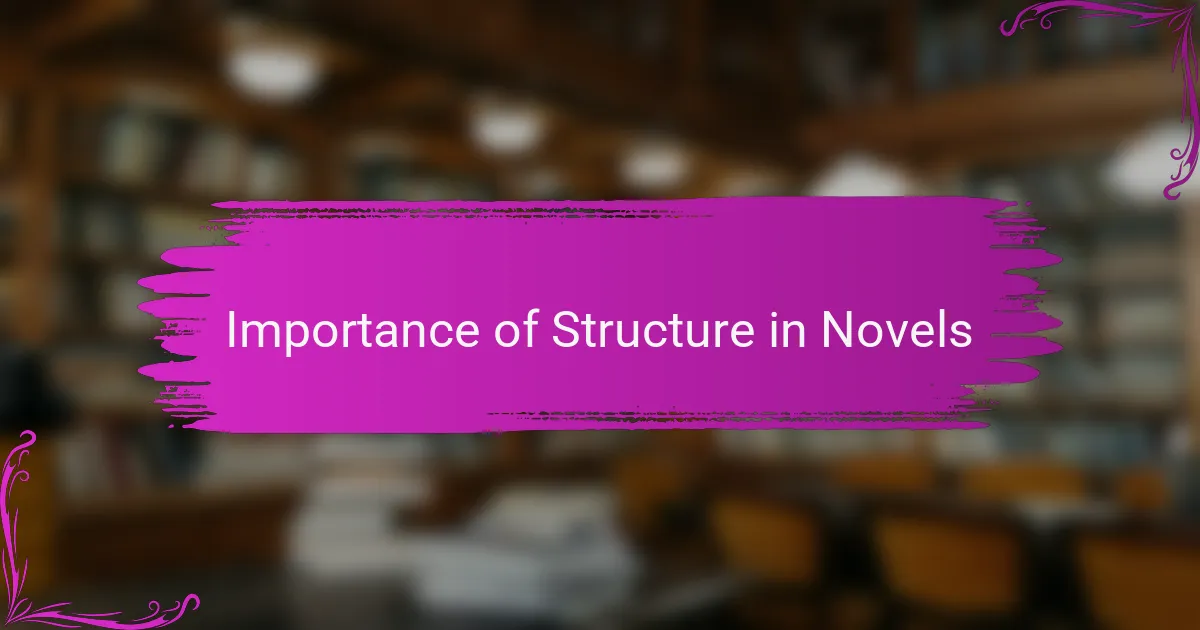
Importance of Structure in Novels
Understanding the importance of structure in novels cannot be overstated. In my experience, a well-structured narrative not only guides the reader through the plot but also enhances emotional engagement. For instance, in my reading of Toni Morrison’s works, I’ve noticed how the unconventional timelines and layered storytelling deeply enrich the themes of identity and community.
I’ve come across moments where the structure itself becomes a character in the story, shaping how I perceive the unfolding events. When Morrison employs non-linear storytelling, it often reflects the fragmented experiences of her characters, allowing me to feel their struggles and triumphs more intensely. This structure invites readers to piece together the narrative, fostering a more active and immersive reading experience.
Here’s a comparison of traditional narrative structure versus the structure often found in Morrison’s novels:
| Traditional Structure | Morrison’s Structure |
|---|---|
| Linear timeline | Non-linear timeline |
| Clear beginning, middle, end | Layered storytelling with multiple perspectives |
| Focus on plot progression | Emphasis on themes and character development |
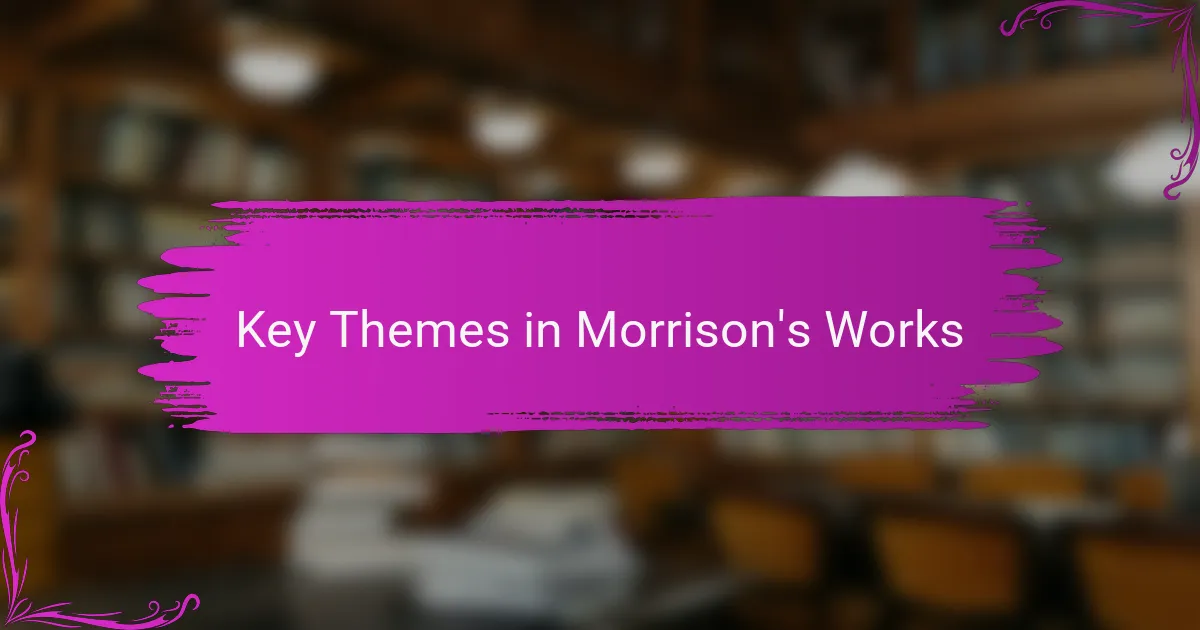
Key Themes in Morrison’s Works
Morrison’s works often delve into themes of identity and belonging, and I feel it’s something many readers can relate to. When I read “Song of Solomon,” I was struck by Milkman’s journey of self-discovery, which serves as a powerful reminder of how our roots shape who we become. Doesn’t it resonate with you when a character’s quest for identity mirrors your own search for belonging?
Another key theme in Morrison’s novels is the exploration of memory and its impact on history. For example, “Beloved” showcases how the past can haunt present realities. I found myself pondering how memory, both collective and personal, influences our lives in ways we may not fully understand, often leading to a deeper appreciation for healing and the process of reclaiming one’s narrative.
Moreover, Morrison’s depiction of community and the bonds among its members adds a unique layer to her storytelling. In “The Bluest Eye,” the relationships between characters convey the complexities of love and resilience amidst societal pressures. I can’t help but wonder how these shared experiences within communities shape individual identities. Isn’t it fascinating how Morrison brings these intricacies to life, highlighting the strength found in connection?
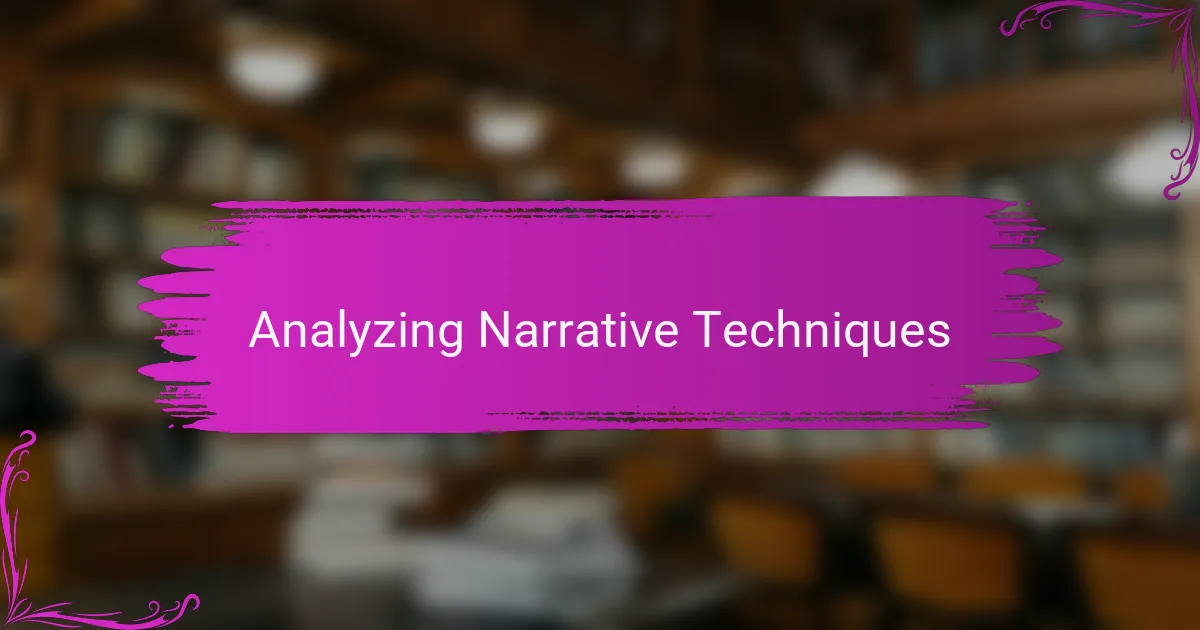
Analyzing Narrative Techniques
When I analyze the narrative techniques used in Morrison’s novels, I find her use of voice to be particularly striking. For example, she often employs a non-linear storytelling approach that adds depth to the characters and underscores their emotional journeys. This method not only engages me as a reader but also allows for impactful revelations that shape my understanding of the characters’ lives.
Another aspect that resonates with me is her use of rich, lyrical language. Morrison’s prose feels almost musical, creating a rhythm that enhances the emotional weight of the story. I recall being completely immersed in the poetic descriptions, which made the narrative both vivid and haunting. It’s as if her words paint a picture that stays with me long after I close the book.
The way she intertwines personal and collective histories in her narratives also deserves attention. Morrison often explores themes of identity and memory, prompting me to reflect on my own experiences. By doing this, she crafts a bridge between her characters and her readers, inviting us to engage in the larger conversation about culture and heritage.
| Narrative Technique | Impact on Reader |
|---|---|
| Non-linear storytelling | Deepens character understanding and engagement |
| Lyrical prose | Creates emotional resonance and immersion |
| Intertwined personal and collective histories | Encourages reflection on identity and culture |
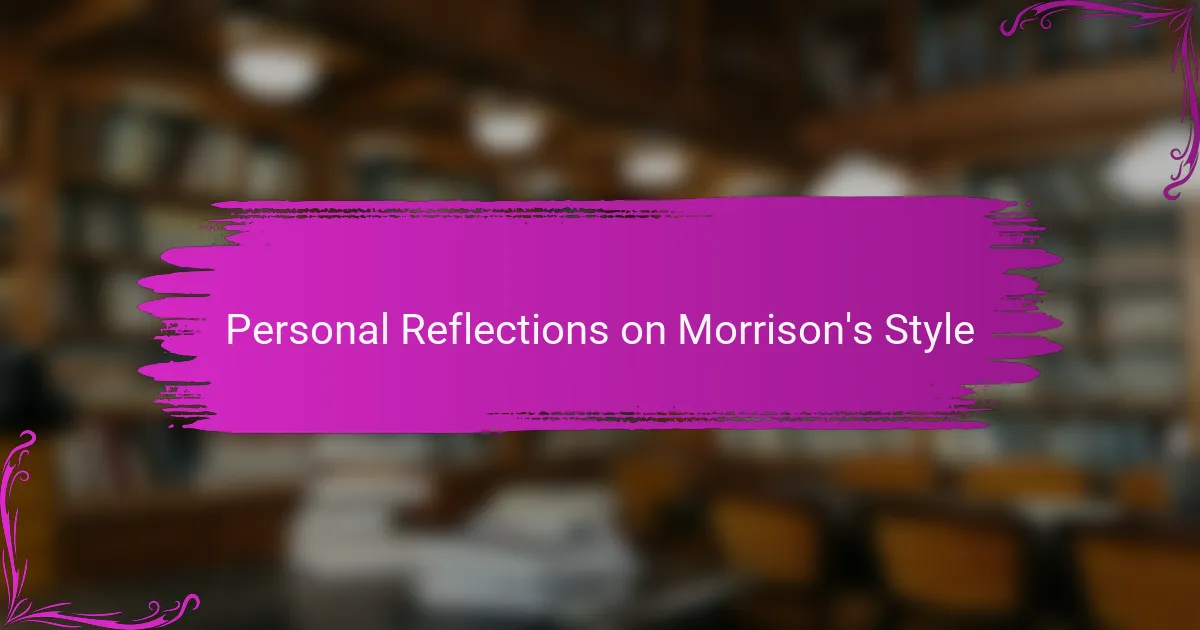
Personal Reflections on Morrison’s Style
Morrison’s style deeply resonates with me, particularly her fluid use of language. When I read her passages, I don’t just understand the story; I feel it. It’s as if her words reach out and touch something within me, sparking emotions that linger long after I’ve closed the book.
There are moments in her novels that feel almost like a dance—a rhythmic flow that draws me in and keeps me engaged. For instance, while reading “Sula,” I was captivated by how the narrative shifts in perspective. It made me think about the reliability of memory and how it colors our perceptions of friendship and betrayal. Have you ever found yourself reconsidering your memories after experiencing them through someone else’s eyes?
I also appreciate how Morrison’s evocative imagery creates vivid pictures in my mind. I recall an early scene in “The Bluest Eye,” where simple descriptions of beauty underscore profound societal issues. It compels me to question what we value as a culture, and I can’t help but reflect on how those same questions manifest in my own life and community.
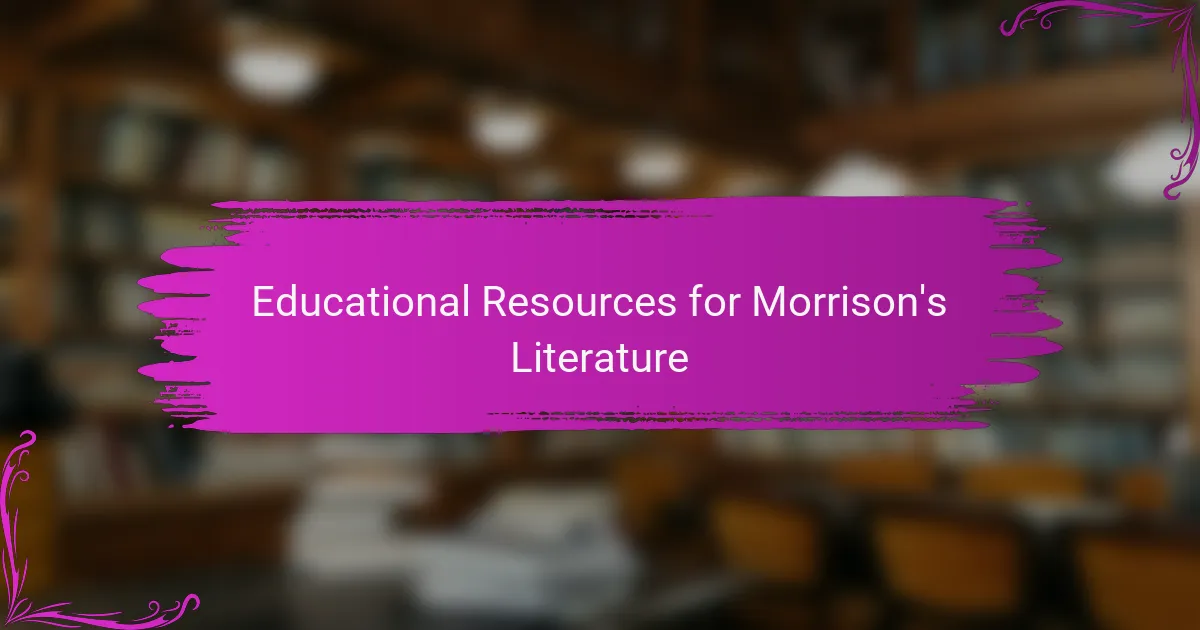
Educational Resources for Morrison’s Literature
When exploring educational resources for Morrison’s literature, I find that curated reading guides can be incredibly beneficial. These guides often highlight the key themes, historical contexts, and critical analyses that enhance my understanding of her work. I vividly remember using a discussion guide for “Beloved” that sparked conversations with friends, leading us to reflect on how the themes of memory and trauma resonate in our own lives.
In addition, interactive online forums and workshops dedicated to Morrison’s novels provide an excellent platform for exchanging ideas. I’ve participated in several virtual book clubs where we dove into Morrison’s narrative techniques, analyzing how they challenge traditional storytelling. It was enlightening to hear different interpretations, making me realize just how multifaceted her writing truly is. Have you ever experienced a text in a completely new light through others’ perspectives?
Lastly, documentaries and lectures featuring Morrison herself add a rich layer to studying her work. Watching her discuss her novels and the inspirations behind them has always felt like a personal invitation into her world. I remember viewing a documentary that contextualized her stories within the broader landscape of American literature; it deepened my appreciation for her contributions and allowed me to view her characters in a more nuanced way. Engaging with these resources not only enriches my understanding but also fosters a greater connection to her powerful narratives.
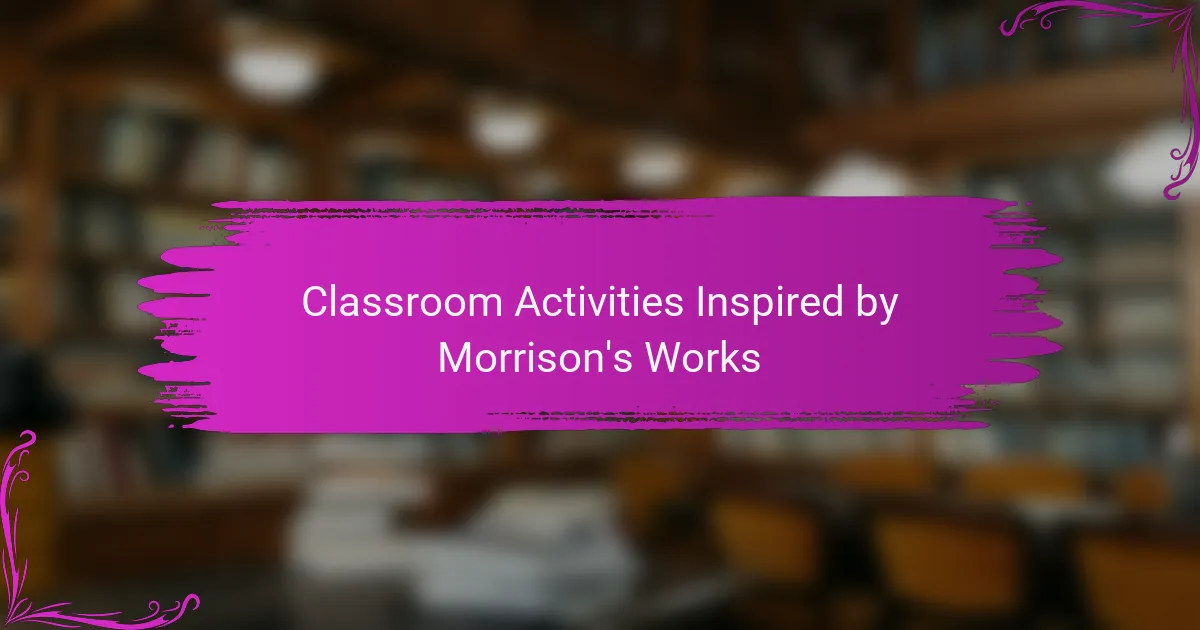
Classroom Activities Inspired by Morrison’s Works
Engaging students with Morrison’s works can truly spark their creativity and understanding of complex themes. For instance, I’ve found that assigning a creative writing prompt where students craft a short story mimicking the narrative style of Morrison can encourage them to explore character development and emotional depth. This hands-on approach allows them to connect with the material on a personal level, often leading to discussions that further illuminate the themes in her novels.
Another effective activity is a group discussion centered on an impactful quote from one of Morrison’s books. In my experience, this not only fosters critical thinking but also encourages students to share their interpretations and personal experiences related to the text. It’s fascinating how a single line can resonate differently with each student, leading to rich conversations.
Here’s a comparison table that highlights various activities inspired by Morrison’s works:
| Activity | Description |
|---|---|
| Creative Writing Prompt | Students write a short story emulating Morrison’s narrative style, focusing on character and emotion. |
| Group Discussion | Analyze a significant quote from Morrison’s works, sharing personal insights and interpretations. |
| Character Analysis | Create visual posters of characters, exploring their motivations and relationships within the story. |
